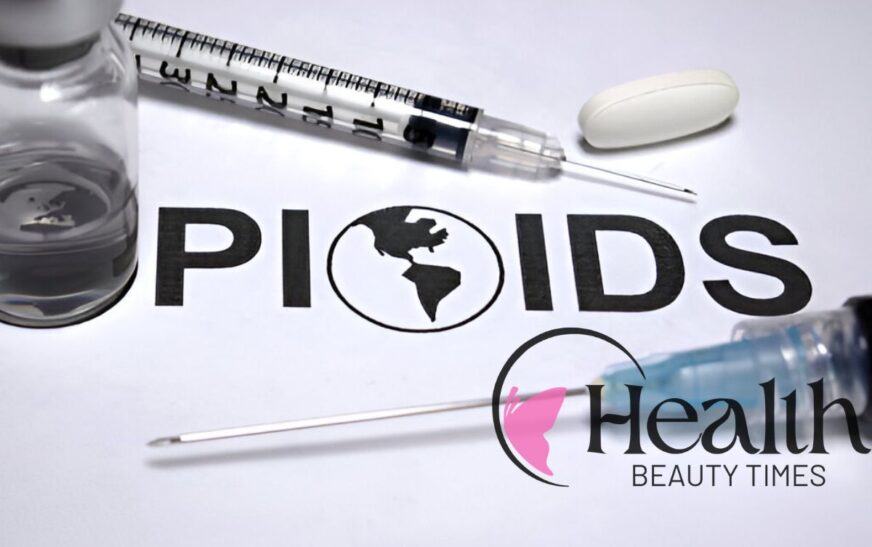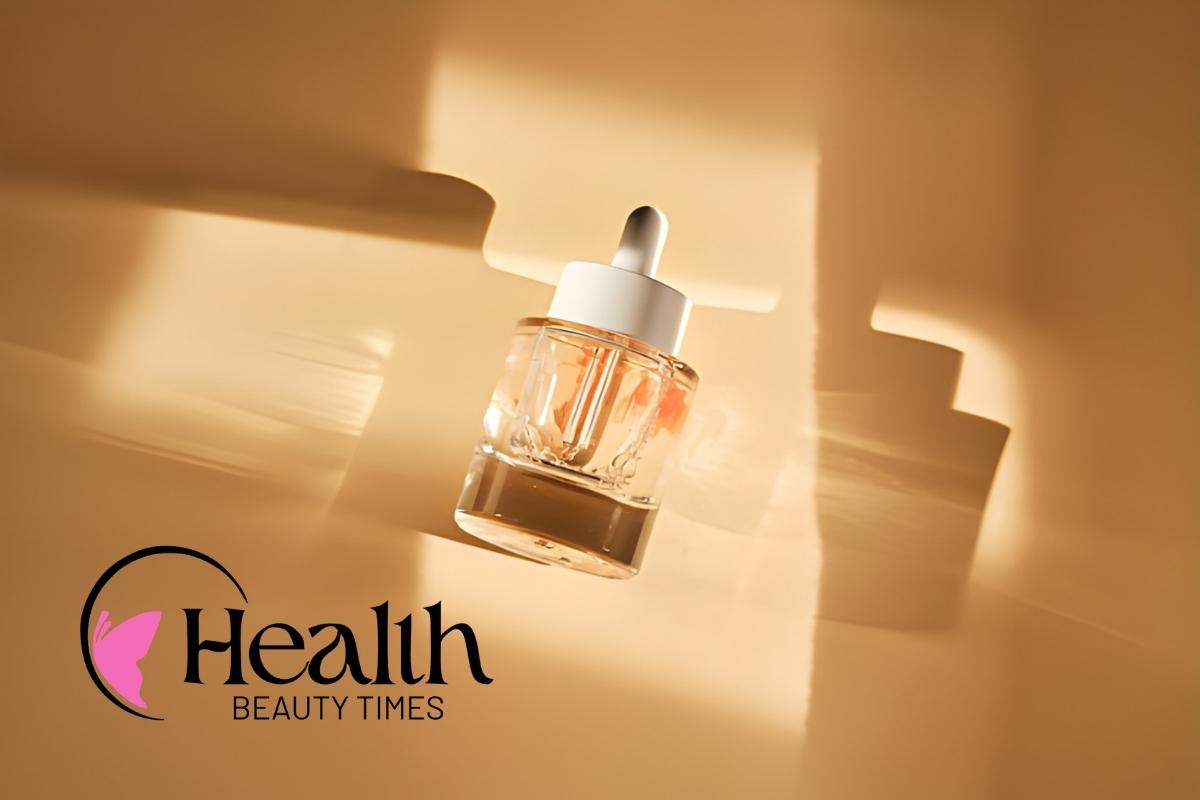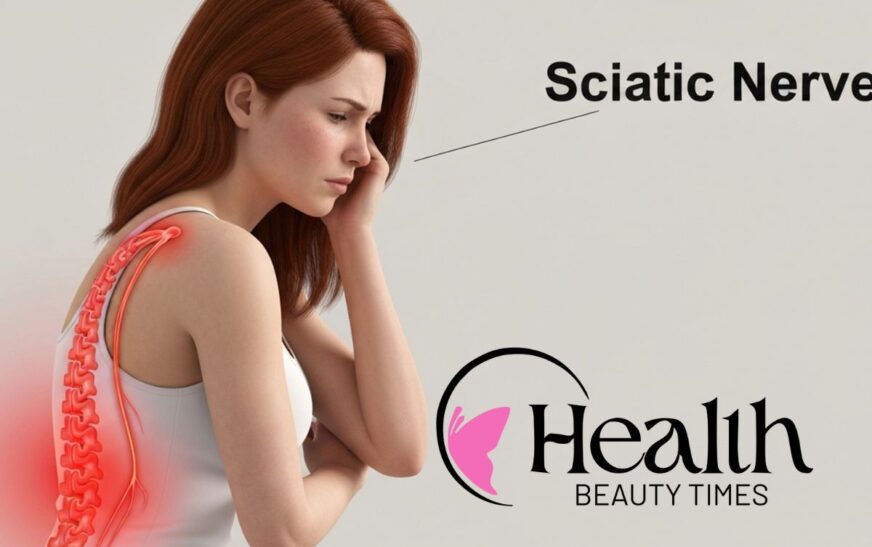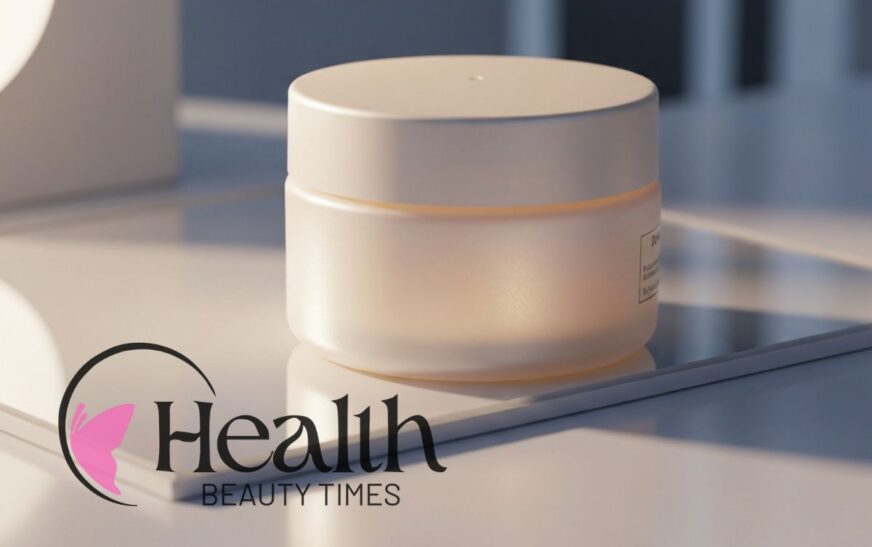Introduction – Pepcid for PMDD
Living with premenstrual dysphoric disorder (PMDD) can be hard. Each month, you may feel like you are fighting tough symptoms that really affect your life. This is not like regular PMS. PMDD can change your mood, hurt your relationships, and make you feel bad overall. There are treatments out there, but people still want better answers.
Lately, in online groups, people are talking about a new idea. Some say that Pepcid, which is usually used to help with heartburn, might help with PMDD symptoms. Is it true that Pepcid can help people who have PMDD? This article takes a look at that question and shows what the science says for now.
Understanding PMDD and Its Impact
Premenstrual dysphoric disorder is a serious and long-lasting health problem. It has very strong emotional and physical symptoms. These issues show up in a regular way with your menstrual cycle. They usually start about two weeks before your period. The symptoms often go away just after your period begins.
PMDD is not the same as PMS, which is milder. With PMDD, the extreme mood swings and physical symptoms can make it hard for you to work or go to school. It can also affect your relationships with other people. These problems make PMDD tough to deal with. Knowing what PMDD is, helps you get ideas for better ways to manage it.
Key Symptoms and Challenges of PMDD
PMDD is now known as a depressive disorder. It is the most severe form of premenstrual syndrome. The pmdd symptoms are not just hard to deal with; they can stop you from living your normal life. Many people with pmdd feel like their mood changes so much that it feels like someone else takes over for some days every month. This can make it tough to keep up with your daily life and your relationships.
The main part of pmdd is the strong and hard-to-handle emotional symptoms. You may get extreme mood swings. You may also feel very sad or start to think there is no hope. There are other pmdd symptoms you might face, like:
- Intense irritability or anger
- Anxiety, tension, or feeling on edge
- Difficulty concentrating
- Lethargy and being very tired all the time
- Changes in what you want to eat or starting to crave certain foods
Many people say these mood swings feel like a “Jekyll and Hyde” situation, where you can’t control your feelings. Researchers say people with pmdd have a much higher risk of trying to end their lives. This shows how important it is to know the signs and get help for pmdd. For many, the effects of pmdd add up to a lot of unhappy years in their life.
How PMDD Differs from PMS
While both PMDD and PMS share similar physical symptoms and occur during the luteal phase of the menstrual cycle, they are fundamentally different conditions. PMS is very common, with up to 90% of women experiencing at least one symptom like bloating or irritability. These symptoms are generally manageable and don’t typically disrupt daily life.
PMDD, however, is a clinically diagnosed mood disorder. The key distinction is the severity of the symptoms, particularly the emotional ones. With PMDD, the mood disturbances are so intense that they impair your ability to function at work, school, or in social settings. It affects a smaller portion of the population, with estimates around 1.6% to 8% of menstruating individuals.
The diagnosis requires at least five specific symptoms, with one being a significant mood-related issue like depression or anxiety. This severity is what separates it from PMS and places it in the category of serious mood disorders.
| Feature | Premenstrual Syndrome (PMS) | Premenstrual Dysphoric Disorder (PMDD) |
| Severity | Mild to moderate symptoms that are generally manageable. | Severe symptoms that significantly disrupt daily life and functioning. |
| Classification | A collection of symptoms. | A clinically diagnosed depressive disorder. |
| Primary Symptoms | Primarily physical symptoms like bloating and breast tenderness, with mild moodiness. | At least one severe mood symptom (e.g., depression, anxiety, anger) is required for diagnosis. |
| Impact | Does not typically interfere with work, school, or social relationships. | Causes significant distress and impairment in social and occupational functioning. |
Exploring Current Treatment Options for PMDD
Finding an effective treatment for PMDD is very important if you want to get back in control of your life. The good news is that there are a few ways to help manage the tough symptoms. The medical community has picked out several main ways that work well, and they are usually the first things people try.
Most of these treatments work in the brain where chemical messengers are, or with the body’s hormones, because these things can cause PMDD. Some options are medicines called serotonin reuptake inhibitors and also hormonal therapies. These help to balance your body and bring down the tough symptoms you have each month. Below, you will see not only the common therapies used in medicine but also other ways people might try to feel better.
Standard Medical Therapies
The gold standard for PMDD treatment is a type of medicine called selective serotonin reuptake inhibitors, or SSRIs. These antidepressants, like sertraline and fluoxetine, are FDA-approved for PMDD. They help about 60-70% of people who have this condition. PMDD seems to happen because of a sensitivity to hormone changes. These shifts can change how much serotonin the body has, which causes pmdd symptoms. SSRIs work by helping to balance this important neurotransmitter.
Another treatment for PMDD is hormonal birth control. Pills that have both estrogen and progestin can help by stopping ovulation. This keeps hormone changes in check and may lessen pmdd symptoms. The contraceptive with drospirenone and ethinyl estradiol is the only birth control approved by the FDA for PMDD treatment.
But how people respond to birth control is not always the same. Some people see a big improvement, others feel worse, and for some, it may not do much. It can take some time to find the right medicine. You and your doctor will need to work together to see which option is best for you.
Lifestyle and Alternative Approaches
Besides using medication, making some lifestyle changes can really help with PMDD symptoms. Doctors often suggest these steps along with medical treatments. Regular exercise, eating a balanced diet, and handling stress are key things that can make a big difference.
Cognitive behavioral therapy (CBT) is also known to be helpful. This type of therapy teaches you ways to cope with mood swings and deal with problems that may come up because of PMDD symptoms. There are other things that people try to get relief too.
Some other options that people and studies have talked about for PMDD control are:
- Nutritional Supplements: Taking supplements like calcium, magnesium, and vitamin B6 may help with pmdd symptoms.
- Herbal Remedies: The supplement chasteberry can help ease pmdd symptoms, according to some studies.
- Mind-Body Practices: Practices like yoga, meditation, and acupuncture may lower stress and help the body feel better.
What Is Pepcid and How Does It Work?
Pepcid is a brand name for a drug called famotidine. Many people buy it when they have ,heartburn or other stomach problems. The main job of Pepcid, as approved by the FDA, is to lower how much stomach acid the body makes. It helps treat acid reflux, heartburn, and ulcers in the stomach.
Pepcid works by stopping special signals in the stomach. These signals tell the stomach to make more acid. While most people use Pepcid for their stomach acid problems, the drug does more than just help the stomach. It acts in other ways, which made people look into Pepcid for treating different health issues. This extra action is why people also talk about Pepcid for PMDD.
The Role of Famotidine as an Antihistamine
Famotidine is a medicine that people usually know for lowering stomach acid. But, it is also an antihistamine. Famotidine is an H2 blocker. This means it stops histamine from connecting to H2 receptors. These receptors are found on the cells in the stomach. When histamine connects to them, it makes these cells release acid. So, when famotidine blocks the receptors, it brings stomach acid down.
H2 receptors are not just found in the stomach. They are also in parts of the body like on mast cells. Mast cells are very important for the body’s allergic reactions and inflammation. When triggered, these mast cells let out histamine. During the menstrual cycle, estrogen can go up and down. This can make mast cells give out even more histamine.
By stopping H2 receptors in the whole body, famotidine can lower how much histamine affects you. That is why some people use it to help with histamine intolerance and conditions like Mast Cell Activation Syndrome, which is known as MCAS. Some have noticed its antihistamine effect might even help people with PMDD who get symptoms from changes in histamine.
Common Uses of Pepcid in the U.S.
In the United States, people can find Pepcid and its generic version, famotidine, in most places. These medicines are often used to treat problems with too much stomach acid. Many people use Pepcid for quick relief when they have heartburn or indigestion.
The FDA says that Pepcid AC and other famotidine products should mainly be used to treat and prevent these problems:
- Heartburn: This is a burning feeling in your chest. It happens when stomach acid moves up into the tube that connects your mouth to your stomach.
- Acid Indigestion: This is when you feel pain or discomfort high in your belly.
- Sour Stomach: This is a problem that comes with too much acid in the stomach.
- Gastroesophageal Reflux Disease (GERD): This is a long-term and worse kind of acid reflux.
There are other times when doctors tell people to take famotidine. It can be part of a plan to treat strong allergic reactions. Often, doctors mix famotidine with an H1 blocker like Benadryl or Zyrtec. This is because together, they cover all the effects that histamine has on the body. It shows that famotidine is used as an antihistamine as well as to treat stomach acid issues like heartburn.
The Histamine Connection in PMDD
New research shows that there may be a link between histamine and PMDD. Histamine is a chemical that comes from your immune system. People often know histamine for causing problems with allergies. But it also affects mood, digestion, and inflammation. Now, it seems that shifts in histamine may play a big role in how some people feel their PMDD symptoms.
The menstrual cycle can change your hormone levels, which can also change histamine levels in your body. This may be why you get more anxiety, irritability, and bloating in the luteal phase. Learning more about histamine and how it interacts with your body can help us see new ways that PMDD may develop.
How Histamine May Influence PMDD Symptoms
The link between histamine and PMDD symptoms mainly comes from hormones like estrogen. Studies show that estrogen can make mast cells let out more histamine and can also slow down diamine oxidase (DAO), which is the main enzyme that breaks down histamine in the body. This causes high histamine levels to build up, which can cause problems.
Histamine levels tend to go up and down during the menstrual cycle. They are highest just before ovulation and again during the luteal phase. These times are when PMDD symptoms usually show up. For people with PMDD, who often react more to changes in hormones, this rise in histamine can make things worse. High histamine is linked to anxiety, irritability, headaches, and inflammation, which many people with PMDD notice.
It is like a loop that keeps going: estrogen makes more histamine, and histamine can also help increase estrogen. If you have histamine intolerance, which means your body cannot break down histamine well, this issue can be even stronger. It often brings more severe PMDD symptoms, like headaches or problems during the menstrual cycle.
Why Antihistamines Have Gained Attention
Given that histamine might make pmdd symptoms worse, it makes sense to ask if antihistamines can help. Antihistamines block histamine receptors. This keeps histamine from causing things like inflammation and changing moods. That is why people are talking more about using antihistamines as a new treatment for pmdd.
The idea is that antihistamines bring down the histamine level in your body. This could make physical symptoms and emotional pmdd symptoms less strong. Some people say these medicines help, especially those with histamine intolerance or MCAS. Small studies and stories from people also support this approach.
Antihistamines are being considered for pmdd for a few clear reasons:
- They might help with mood problems, like irritability and anxiety, because histamine is a neurotransmitter.
- These medicines can ease physical symptoms like headaches and bloating. They do this by lessening inflammation in the body.
- You find antihistamines easily in stores. Most people take them without trouble.
Pepcid for PMDD: What Do We Know So Far?
The talk about using Pepcid for PMDD comes mostly from people online, not from doctors or big medical studies. There is not enough strong research to say that Pepcid should be used to treat PMDD right now. Many doctors do not suggest Pepcid for PMDD.
Still, many people share stories on websites and social media about how Pepcid has helped them feel better from pmdd. These stories make others want to know more. Some people and even a few doctors are starting to pay more attention. The sections below show what some experts say and talk about where people discuss pmdd and Pepcid together.
Insights from Medical Experts and Doctors
Within the mainstream medical community, using Pepcid for PMDD is still seen as experimental. Right now, there are no large studies that show it works for treating these pmdd symptoms. People who work in areas like reproductive psychiatry say that treatments with the most proof, like SSRIs and hormonal birth control, should stay as the first things we try when it comes to mood disorders like pmdd.
Dr. Julia N. Riddle is a psychiatrist at the Center for Women’s Mood Disorders at the University of North Carolina. She says, “We do not actually have any proof at this time about antihistamines or a link between the allergic immune response and a root cause for pmdd.” This matches what most experts think – that the medical community still needs more studies before Pepcid or any antihistamine can be recommended for this.
But, doctors who work with things like histamine intolerance or MCAS may look at how an antihistamine can help certain people. They might try this if a patient’s pmdd symptoms seem related to histamine overload. Still, this is not for everyone, and is only done for some people if other reasons for pmdd are not found.
Perspectives from Online Communities and Social Media
Much of what people say about using Pepcid for PMDD is found on social media sites. TikTok and other online places have made this topic popular. On TikTok, people post stories about their own lives. They talk about how taking an antihistamine like Pepcid in the luteal phase made big changes to their mood swings and physical symptoms. The videos have helped more people learn about PMDD. They also have made others want to try Pepcid for themselves.
In PMDD groups on Facebook and Reddit, the talks go deeper. Members explain what happened when they tried Pepcid, and talk about how much they used and when they took it. Some people used H2 blockers like Pepcid, with H1 blockers like Zyrtec or Claritin, to see if they could get better results to help irritability, anxiety, and other PMDD symptoms.
People in these communities say a few different things:
- Some say they get a lot of relief from anxiety and irritability.
- Others see less bloating and fewer headaches.
- Many tell us a mix of H1 and H2 blockers works best.
- Some find there is no change at all.
- It is important to say this is just what people shared, and not what the doctor told them to do.
Safety, Risks, and Side Effects of Using Pepcid for PMDD
While Pepcid is seen as a safe over-the-counter drug when you use it the right way, there are things to think about if you want to try it for something else, like PMDD. Every drug can have side effects. Pepcid can also mix with other medicines you may take. There is not much research about how safe or risky it is to use Pepcid for PMDD for a long time, so people do not know all the risks yet.
Before you start using Pepcid, you should know about the side effects and learn about its rules and status. Talking to your doctor is the best way to see if the good points of Pepcid for PMDD can be worth the risk for you.
Potential Adverse Reactions and Interactions
Taking Pepcid for PMDD is mostly safe for many healthy people, but it is not without possible problems. Most side effects are mild and can go away on their own. It is good to know about them before you start using this medicine.
Some side effects of famotidine are headache, dizziness, constipation, or diarrhea. More serious allergic reactions like rash, itching, swelling, or trouble breathing can happen but are rare. If you get any of these, you should see a doctor right away.
Remember, Pepcid can change how your body takes in other medicines that need stomach acid to work. Always tell your doctor or pharmacist about all the medicines and supplements you are using. Here are some key things you should know:
- Common side effects are usually mild (like headache or constipation).
- Serious allergic reactions can happen, but they do not happen often.
- Pepcid can interact with some other drugs.
- You should talk to your healthcare professional to see if the medicine is right for you.
Is Pepcid Use for PMDD FDA-Approved or Off-label?
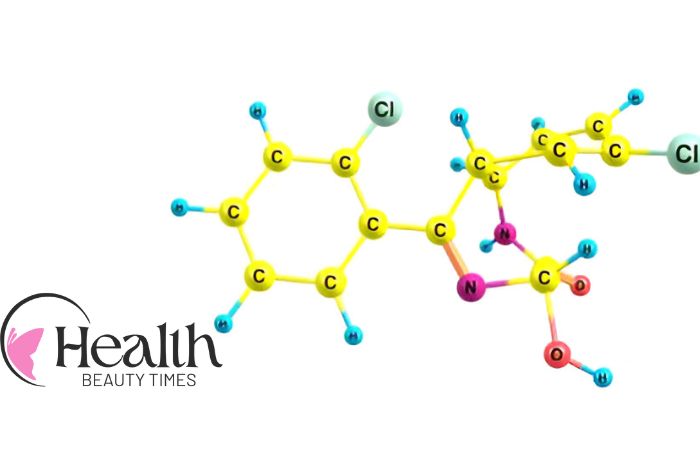
Using Pepcid for PMDD is called an “off-label” use. This means that the U.S. Food and Drug Administration (FDA) has not given its approval for people to use the medicine to treat premenstrual dysphoric disorder, or PMDD. The FDA gives approval for medicines after they look at studies showing they are safe and really work to treat a certain health problem. However, Pepcid is only approved to treat issues with acid in the stomach.
A person who speaks for PEPCID said, “PEPCID® branded products are not approved for use by the FDA for relief of premenstrual dysphoric disorder (PMDD) symptoms. Use PEPCID® products only as directed on the product labeling.”
Doctors often give medicines off-label. It is legal and many doctors do this. They may do it when they think the medicine can help the patient, based on what they know or on some new proof. But, since using Pepcid for PMDD is not strongly backed by much research yet, it has more chances of not working well than other FDA-approved treatments.
Comparing Pepcid with Traditional PMDD Treatments
When you think about taking Pepcid for PMDD, it helps to look at how it matches up with other treatments that people have used for a long time. Birth control and SSRIs are seen as the main choices by many doctors, and the science behind them is strong. There have been lots of careful studies on these options. This is why most healthcare providers stick with them first.
Pepcid does not work like SSRIs or birth control. Instead, Pepcid acts on histamine in the body, not on serotonin or the body’s hormone cycles. Looking at what Pepcid does can show you where it may be useful in a treatment plan for PMDD. It can also help you see how strong the evidence for Pepcid’s benefits is, compared to what we already know about birth control and other main treatments.
Efficacy versus SSRIs, Birth Control, and Other Medications
There is currently no evidence to suggest that Pepcid works better than traditional PMDD treatments like SSRIs or specific birth control pills. Selective serotonin reuptake inhibitors are considered the gold standard because large-scale studies have consistently shown their efficacy in reducing the severe mood symptoms of PMDD for a majority of users.
Similarly, hormonal birth control that suppresses ovulation has a strong evidence base for stabilizing the hormone fluctuations that trigger PMDD. The efficacy of these treatments is established and predictable for a large portion of the PMDD population.
In contrast, the evidence for Pepcid is purely anecdotal. While some individuals report significant benefits, its effectiveness has not been scientifically validated. It may be helpful for a subset of people whose symptoms are strongly linked to histamine, but it is not a replacement for proven first-line therapies.
| Treatment | Mechanism of Action | Evidence for PMDD Efficacy | Status |
| SSRIs | Increases serotonin levels in the brain to regulate mood. | High: Considered the “gold standard” with extensive clinical trial data. | FDA-approved |
| Birth Control | Suppresses ovulation and stabilizes hormone fluctuations. | High: Proven effective in many clinical trials; one type is FDA-approved for PMDD. | FDA-approved (specific formulation) |
| Pepcid (Famotidine) | Blocks H2 histamine receptors to reduce histamine’s effects. | Low: Based on anecdotal reports and theory; no clinical trials. | Off-label |
Is Pepcid Beneficial During Specific Phases of the Cycle?
If Pepcid is helpful for PMDD, the biggest benefit would likely be during the luteal phase of the menstrual cycle. This luteal phase is the two weeks between ovulation and the start of menstruation. PMDD symptoms, like mood swings and irritability, often show up at this time. The reason behind this has to do with changes to estrogen and histamine.
Estrogen levels go up and down quickly during the luteal phase. Estrogen can cause mast cells to release histamine. When this happens, you may get a rush of histamine in your body. Many people think that this rise in histamine can make PMDD symptoms, like mood swings and bloating, worse.
So, taking an antihistamine like Pepcid during the luteal phase might help with PMDD symptoms. It may block some of the effects of histamine. People online often say they use Pepcid only during the time after ovulation and stop when their period comes. This way, they try to get relief from PMDD symptoms right when they need it most.
Frequently Asked Questions (FAQ)
Many people have questions about Pepcid and how it helps with PMDD. They want to know what this medication does during the menstrual cycle, mainly in the luteal phase. Some ask if Pepcid can help with mood swings that come with severe premenstrual syndrome or major depressive disorder. Pepcid, with the active ingredient famotidine, is a histamine receptor blocker. It lowers stomach acid. Still, its use for easing PMDD symptoms is still being talked about in reproductive psychiatry.
Can I take Pepcid to manage my PMDD symptoms?
Some people say that taking Pepcid for its antihistamine effects helps with their PMDD symptoms. But this is not what Pepcid is usually used for. There is no clear science to back up using Pepcid for PMDD. It is important to talk to your doctor before you try to use Pepcid to help with PMDD, so they can make sure it is safe for you.
Are there any risks or side effects to consider when using Pepcid for PMDD?
Yes, Pepcid can have some side effects. These can be headache, dizziness, and constipation. The medicine is usually safe for most people, but it can cause bad reactions in some, and it might not work well with other medicines. It is a good idea to talk with a healthcare provider before using Pepcid for PMDD. This helps to make sure it is a good option for you.
Do doctors actually recommend Pepcid as a PMDD treatment?
Most doctors in the medical community do not see Pepcid as a main PMDD treatment. There is not enough good research on it. The usual pmdd treatment is based on proof and what has worked for many. Pepcid is mostly talked about because some people share their own stories about it. Doctors may only talk about using it after other standard treatments have not worked.
Conclusion
In the end, handling pmdd symptoms often needs more than one kind of help. Pepcid has come up as something that you can try. It may be useful, but you should think about how it helps and compare it with other treatments. You should also look at any risks. Knowing how histamine affects pmdd can help you see what choices you have. Getting advice from doctors and listening to stories shared by people in the community will help you figure out what works best. If you want to know more about how Pepcid might help you with pmdd, or if you have any questions, you can ask for a free talk with our expert team. Take steps for your health and feel good about the choices you make today.
Don’t Miss These: Female Sciatic Nerve Pain Location: What You Need to Know

